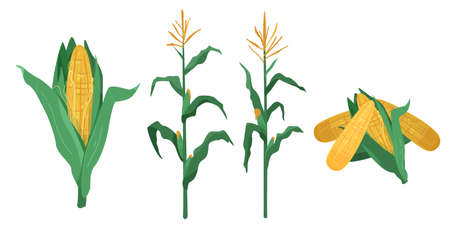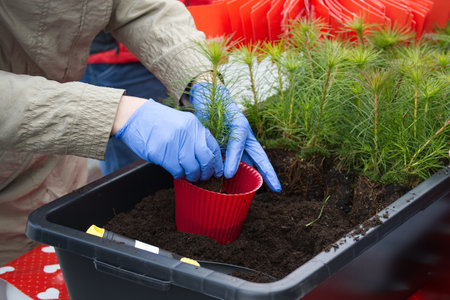1. Recognizing Common Visual Symptoms of Fungal Diseases
When it comes to diagnosing fungal diseases in plants, your first step is often a careful visual inspection. Fungi can affect almost any part of a plant, and early detection is key to managing the problem. Here are some typical symptoms you might spot on leaves, stems, flowers, or even in the soil:
Common Visual Signs of Fungal Infections
| Symptom | Description | Where to Look |
|---|---|---|
| Leaf Spots | Small or large spots that may be yellow, brown, black, or tan; often with a defined edge. | Upper and lower leaf surfaces |
| Mold Growth | Fuzzy, powdery, or slimy patches, usually gray, white, or green in color. | Leaves, stems, soil surface |
| Mildew (Powdery or Downy) | White or grayish powdery coating (powdery mildew), or yellowish patches with fuzzy growth underneath (downy mildew). | Leaf surfaces (top for powdery, underside for downy) |
| Abnormal Wilting | Sudden drooping or collapse of plant parts despite adequate watering; may be accompanied by discoloration at the base. | Entire plant or specific stems/leaves |
| Blights & Dieback | Browning and death of leaves, shoots, or flowers starting from the tips. | Tops and edges of affected plant parts |
| Root Rot | Mushy, brown roots; stunted growth above ground. | Below soil line (roots) |
Tips for Visual Diagnosis
- Check both sides of leaves: Some fungi prefer the undersides.
- Look for patterns: Fungal spots are often circular and have a target-like appearance.
- Observe multiple plants: See if symptoms are spreading in clusters or isolated cases.
- Monitor over time: Note if symptoms worsen quickly after wet weather or high humidity.
If You Notice These Symptoms…
If you spot any of these common signs, take clear photos and make notes about when and where they appeared. This information will be helpful for further diagnosis and deciding on lab testing if needed.
2. Distinguishing Fungal Infections from Other Plant Issues
When your plants start looking unhealthy, it can be tough to figure out if you’re dealing with a fungal disease, pest infestation, or nutrient deficiency. Recognizing the difference is key for effective treatment. Let’s explore how to use visual clues and simple diagnostic steps to tell these problems apart.
Visual Cues: What to Look For
Fungal infections often show up as spots, patches, moldy growths, or wilting. However, pests and nutrient issues can create similar symptoms. Here’s a quick comparison:
| Problem Type | Common Symptoms | Where to Look |
|---|---|---|
| Fungal Diseases | Leaf spots (brown/yellow/black), powdery or fuzzy coatings, wilting despite watering, rotting stems/roots | Leaves (top/bottom), stems, soil surface |
| Pest Damage | Chewed leaves, holes, sticky residue (honeydew), visible insects or webs, distorted new growth | Underside of leaves, stems, flower buds |
| Nutrient Deficiency | Pale or yellowing leaves (chlorosis), poor growth, leaf edges turning brown or purple, no visible pests or mold | Older/lower leaves for most deficiencies; whole plant may look weak |
Basic Diagnostic Steps
- Inspect Closely: Use a magnifying glass to check leaves (especially undersides) and stems for signs of pests or fungal spores.
- Check Patterns: Fungal diseases usually have irregular patterns (spots or patches), while nutrient issues are more uniform across the plant.
- Look for Residue: Powdery mildew looks like white flour on leaves; sooty mold is black and grows on sticky honeydew left by pests like aphids.
- Assess Watering and Soil: Overwatering can cause root rot (a fungal problem), but underwatered plants wilt without spotting or mold.
- Test for Pests: Tap a branch over white paper—small bugs may drop off if pests are present.
- Nutrient Check: If you see yellowing but no spots or pests, consider testing your soil nutrients with a home kit available at garden centers.
Quick Reference Table: Fungal vs. Pest vs. Nutrient Issues
| Fungal Disease | Pests | Nutrient Deficiency | |
|---|---|---|---|
| Moldy/Fuzzy Growth? | Yes (often white/gray/black) | No (except honeydew supports sooty mold) | No |
| Bite Marks/Holes? | No | Yes (jagged edges) | No |
| Pale/Uniform Yellow Leaves? | No (usually spotted/patchy) | No (unless heavy infestation) | Yes (even color change) |
| Pests Visible? | No (fungus is microscopic) | Yes (insects/webs/eggs) | No |
| Affected Areas? | Patches/spots/random areas | Mainly new growth/underside of leaves | Mainly lower/older leaves first |
Troubleshooting Tip:
If you’re still unsure after checking these clues, snap some clear photos and visit your local extension office or garden center—they can help identify the issue and recommend solutions.

3. Collecting Plant Samples for Laboratory Analysis
When youre trying to figure out whats wrong with your plants, collecting good samples is a crucial step before sending them off to a diagnostic lab. Doing this right helps make sure the experts get clear results and you get the answers you need. Here are some practical tips for safely gathering and handling plant samples to avoid contamination.
What Youll Need
| Item | Purpose |
|---|---|
| Clean scissors or pruners | To cut plant tissue cleanly without introducing outside fungi or bacteria |
| Disposable gloves | To prevent spreading disease between plants and samples |
| Paper bags (not plastic) | To store samples and allow air flow, preventing mold growth during transit |
| Permanent marker | To label samples clearly with plant name, location, and date |
| Sample submission form (from lab website) | To provide background information for accurate diagnosis |
Steps for Collecting Plant Samples
- Select the Right Tissue: Choose leaves, stems, roots, or fruit that show early signs of disease but aren’t completely dead. Avoid dry, crispy tissue—labs need fresh material.
- Avoid Contamination: Use clean tools and gloves. If sampling multiple plants, disinfect your tools between each one (rubbing alcohol works well).
- Collect Enough Material: A few leaves, a 4-6 inch section of stem, or small roots are usually enough. For whole plants (like seedlings), include the roots and some soil.
- Package Properly: Place samples in paper bags—not plastic—to reduce excess moisture and mold growth. Keep roots separate from foliage if possible.
- Label Everything: Write the plant’s name, where you collected it, date, and any symptoms you noticed on each bag.
- Fill Out Lab Forms: Most labs have forms online—include as much detail as you can about the plant type, symptoms, when they started, how widespread the issue is, and what treatments have been tried.
- Ship Quickly: Send your samples overnight or within 24 hours to keep them fresh. Don’t leave them sitting in hot cars or direct sun.
Troubleshooting Common Sampling Issues
| Problem | Solution |
|---|---|
| Mold grows on sample before it arrives at lab | Use paper bags instead of plastic; ship as soon as possible; avoid wetting samples |
| Tissue dries out before arrival | Add a slightly damp paper towel around roots (not leaves); ship quickly; avoid high heat during storage and transit |
| Poor sample labeling leads to confusion at lab | Double-check all labels; write clearly with permanent marker; use separate bags for different plants or locations |
Sourcing Local Diagnostic Labs in the U.S.
If you’re not sure where to send your sample, check with your local Cooperative Extension office or state university—they often run plant diagnostic clinics. Many labs have user-friendly websites with shipping instructions and submission forms tailored to home gardeners and professionals alike.
4. Laboratory Diagnostic Approaches for Fungal Diseases
While visual inspection is helpful, sometimes it’s hard to tell what’s really causing your plant’s problems just by looking. That’s where laboratory methods come in! These techniques help you accurately identify the specific fungal pathogen responsible for the disease. Here are some of the most common lab approaches used across the United States:
Culturing Fungi on Media
Culturing means growing a sample from your plant (like a leaf spot or root piece) on a special nutrient medium in a petri dish. If a fungus is present, it will grow and form colonies that experts can study for color, texture, and growth patterns. This method is super useful, but keep in mind it can take several days to weeks to get results.
Pros and Cons of Culturing
| Pros | Cons |
|---|---|
| Helps isolate live fungi for further testing | Can be slow (days to weeks) |
| Useful for confirming active infections | Some fungi don’t grow well in culture |
| Allows for antifungal sensitivity testing | May require expert interpretation |
Microscopy: Looking Close-Up at Fungal Structures
A microscope can reveal fungal spores, hyphae (the branching filaments), and other features right from infected plant tissue or from cultured samples. Different fungi have unique shapes and sizes, so this method helps narrow down the suspect list quickly—especially when combined with culturing.
What You Might See Under the Microscope
- Spores: Round, oval, or elongated reproductive bodies
- Hyphae: Thread-like structures that make up fungal colonies
- Specialized cells or fruiting bodies unique to certain fungi
DNA Testing (Molecular Methods)
The most modern way to identify plant fungal diseases is through DNA testing. Technicians extract genetic material from your plant sample and use molecular tools like PCR (polymerase chain reaction) to look for DNA sequences specific to different fungal species. This method is fast, accurate, and doesn’t require growing the fungus first.
Main Benefits of DNA Testing
- Very precise identification—even between closely related fungi
- Rapid results (sometimes same-day)
- Works with samples that might not culture well
- Can detect multiple pathogens at once if needed
Which Method Should You Choose?
The choice depends on your needs. Home gardeners often work with extension offices or diagnostic labs at universities, which offer one or more of these services. For tricky cases or valuable plants, combining these methods gives the most reliable diagnosis.
5. Interpreting Results and Taking Action
Once youve gathered visual clues and lab results for plant fungal diseases, the next step is making sense of what youve found. This is where you decide how to move forward—whether that means treating your plants, removing them, or seeking extra help from local experts.
Understanding Your Findings
Compare the symptoms you see on your plants—like leaf spots, moldy patches, or wilting—with the results from laboratory tests. Lab reports might identify specific fungi, such as powdery mildew (Erysiphe spp.), downy mildew (Peronospora spp.), or root rot pathogens like Phytophthora. Matching these findings with visible signs helps confirm the diagnosis.
Deciding on Next Steps
Your action plan will depend on both what you observe and what the lab confirms. Use the table below to guide your response:
| Lab/Visual Result | Recommended Action |
|---|---|
| Mild infection, limited to few leaves (e.g., powdery mildew) | Treat with fungicide or remove affected leaves; improve air circulation |
| Severe infection throughout plant (e.g., advanced blight or root rot) | Remove and destroy infected plants to prevent spread; disinfect tools |
| Unclear or unusual symptoms; rare fungus detected | Contact your local Cooperative Extension service for guidance |
| No fungal pathogens detected, but symptoms persist | Consider other causes (bacterial, viral, environmental); seek expert advice if needed |
Treatment Tips for Common Fungal Diseases
- Fungicides: Choose products labeled for your plant and disease type. Follow instructions carefully for safety and effectiveness.
- Cultural Controls: Water early in the day, avoid overhead watering, prune crowded branches, and rotate crops each season.
- Sanitation: Always clean up fallen leaves and debris which can harbor fungal spores.
When to Reach Out for Help
If youre unsure about your results or if the disease seems unusual, dont hesitate to contact your countys Cooperative Extension office or a local master gardener program. These resources are free and tailored to U.S. regions—they can help interpret lab reports and recommend next steps specific to your area.
Proactive Steps for Healthy Gardens
Regular monitoring, quick response to symptoms, and knowing when to get expert help are key parts of managing plant fungal diseases. Using both what you see and what the lab tells you ensures that youre making informed decisions for your gardens health.


